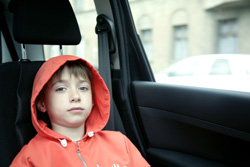Critical gaps in child in-car safety practices
Most European countries mandate the use of child restraints, but there are often gaps in child passenger safety legislation, particularly as children get older. Children travelling in vehicles therefore remain at risk of serious injury because their parents often use the wrong child restraint system, or incorrectly use it. Child restraint systems may be misused in a variety of ways, including facing the wrong direction and the child not being properly secured in the restraint. There are also instances of not ensuring that the restraint is of the correct type and size for the child. To give an indication of the level of misuse, each partner in the CHILD project was tasked with producing a comprehensive review of incorrect use of child restraints in their own country. The outcomes were used to propose new test procedures for evaluating the effectiveness of child restraint systems on the new Q-series of child dummies. Reconstruction of actual crashes with fully instrumented dummies was considered by CHILD project partners as the most appropriate methodology to establish correlations between dummy measurements and child injuries. Engineers at the PSA Peugeot Citroën's laboratory worked with partners from and outside the CHILD project consortium to develop the test matrix for evaluating design modifications to child restraint systems. This includes almost all categories of child restraint systems, among which were rear infant carry cot and seats with harness and most importantly, numerous misuse configurations. A sufficient number of crash reconstructions had to be carried out before new injury limits could be established. New knowledge about the danger to which children are exposed by the misuse of restraint systems could contribute to their improved design that may correct some forms of misuse.



